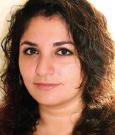Annual screening for breast cancer with magnetic resonance imaging (MRI) has been found to be cost-effective in women aged 30 to 60 years who are BRCA1 or BRCA2 carriers or who have a 50% chance of being a carrier, and such screening is recommended in these women by many authorities. It is unclear whether MRI screening is cost-effective in women with a family history of breast cancer without a proven mutation.
In a study reported in the Journal of the National Cancer Institute, Sepideh Saadatmand, MD, of Erasmus Medical Center in Rotterdam, and colleagues analyzed data from a large Dutch prospective screening study (Dutch MRI Screening Study, or MRISC) in women with a familial risk for breast cancer to determine cost-effectiveness of annual MRI screening.1 They found that MRI screening may improve survival for women with familial risk but that it is expensive, particularly in the youngest age categories.
Study Details
In MRISC, 1,597 women (8,370 woman-years at risk) aged 25 to 70 years with an estimated cumulative lifetime risk of 15% to 50% for breast cancer were screened with clinical breast examination every 6 months and annual mammography and MRI between 1999 and 2007. Cumulative lifetime risk was calculated according to modified tables created by Claus et al.2,3 Cumulative lifetime risks of 30% to 50% and 15% to 30% were categorized as high-risk and moderate-risk, respectively.
Costs per detected and treated breast cancer were calculated, and different screening strategies were modeled to estimate cost per life-year gained compared with the Dutch nationwide breast cancer screening program, which consists of biennial mammography from age 50 to 75 years. Costs were based on current costs in centers in the Netherlands and were calculated in euros and converted to U.S. dollars.
Cancer Incidence
Overall, 47 breast cancers, including 9 ductal carcinomas in situ, were detected. Detection rates were 28 cases in 5,608 woman-years at risk in women in the high-risk group and 19 cases in 2,762 woman-years at risk in the medium-risk group.
For the high-risk and medium-risk groups, incidence rates per 1,000 woman-years were 0 and 0 in those aged < 30 years, 2.9 and 2.2 in those aged 30 to 39 years, 4.2 and 11.9 in those aged 40 to 49 years, 9.2 and 7.0 in those aged 50 to 59 years, and 12.1 and 13.7 in those aged ≥ 60 years.
Estimated Costs
Screening with MRI was estimated to cost $123,672 (€93,639) per detected breast cancer and $133,760 (€101,277) per detected and treated breast cancer. Costs per detected and treated breast cancer decreased with increasing age cohort, likely reflecting the higher cancer incidence rate in older age cohorts: $333,930 (€252,836) in women aged < 30 years (no cancers detected), $270,677 (€204,944) in those aged 30 to 39 years, $116,403 (€88,135) in those aged 40 to 49 years, $91,491 (€69,273) in those aged 50 to 59 years, and $60,315 (€45,668) in those aged ≥ 60 years.
Unexpectedly, however, the proportion of cancers detected by MRI only (and not mammography) also increased with increasing age cohort: 1 of 5 (20%) in women aged 30 to 39 years, 7 of 18 (39%) in those aged 40 to 49 years, 6 of 14 (43%) in those aged 50 to 59 years, and 0 of 2 in those aged ≥ 60 years (14 of 39, 36%, overall).
Cost-Effectiveness Analyses
Screening with clinical breast examination every 6 months and annual mammography and MRI in women aged 35 to 50 years followed by biennial mammography until age 75, as in MRISC, was estimated to result in a mortality reduction of 25% at $134,932 (€102,164) per life-year gained (3.5% discounting), compared with a 17% mortality reduction at $54,665 (€41,390) per life-year gained with mammography only. A strategy of annual screening with MRI followed by mammography and clinical breast examination 6 months later was more cost-effective, reducing mortality by 25% at $118,936 (€90,053) per life-year gained.
The most cost-effective MRI screening strategy was alternate-year screening with mammography in year 1 followed by MRI in year 2, which was associated with a mortality reduction of 21% at $79,654 (€60,310) per life-year gained. Postponing this alternating scheme until age 40 resulted in a mortality reduction of 18% at $60,267 (€45,631) per life-year gained.
The investigators concluded, “Screening with MRI may improve survival for women with familial risk for breast cancer but is expensive, especially in the youngest age categories…. Still, it may be more cost-effective in select groups.” ■
Disclosure: The Dutch MRISC study was supported by ZonMw. The study authors reported no potential conflicts of interest.
Reference
1. Saadatmand S, Tilanus-Linthorst MMA, Rutgers EJT, et al: Cost-effectiveness of screening women with familial risk for breast cancer with magnetic resonance imaging. J Natl Cancer Inst 105:1314-1321, 2013.
2. Claus EG, Risch N, Thompson WD: Autosomal dominant inheritance of early-onset breast cancer. Implications for risk prediction. Cancer 73:643-651, 1994.
2. Kriege M, Brekelmans CT, Boetes C, et al: MRI screening for breast cancer in women with familial or genetic predisposition: Design of the Dutch National Study (MRISC). Fam Cancer 1:163-168, 2001.


